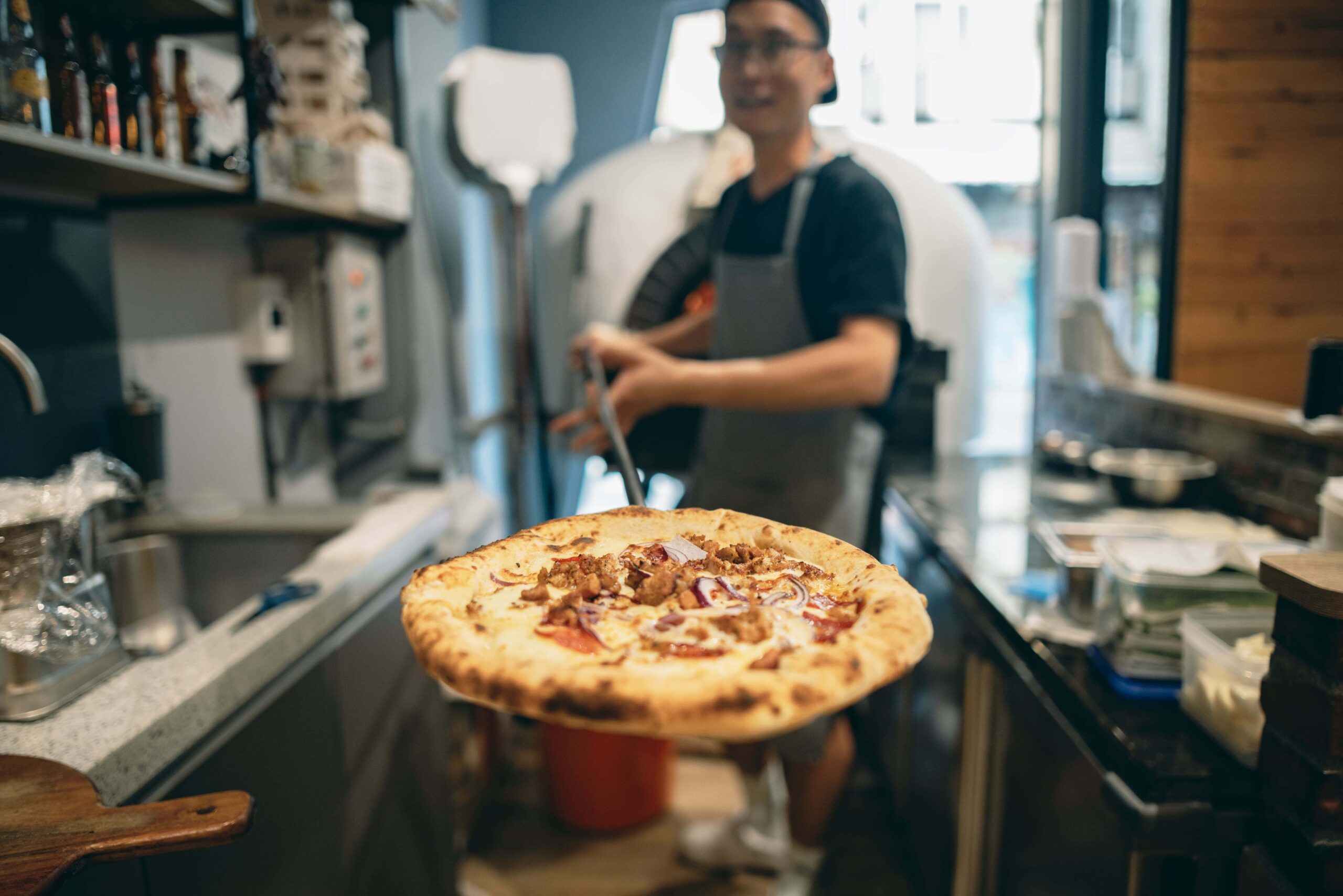Effective scheduling is the backbone of successful pizzeria operations in Davis, California. With the unique dynamics of a college town influenced by UC Davis’s academic calendar, local pizzerias face distinct scheduling challenges that can significantly impact their bottom line. Managing staff schedules efficiently not only ensures optimal coverage during peak hours but also directly affects customer satisfaction, employee morale, and operational costs. For small business pizzerias competing in Davis’s vibrant food scene, implementing the right scheduling solution can be the difference between thriving and merely surviving.
The scheduling landscape for Davis pizzerias is particularly complex due to the seasonal fluctuations in customer demand, the prevalence of student employees with changing class schedules, and California’s stringent labor laws. Restaurant owners must balance providing consistent service while adapting to these variables. Modern employee scheduling solutions offer powerful tools designed specifically to address these challenges, streamlining operations while ensuring compliance with regulations and maximizing staff productivity.
Unique Scheduling Challenges for Davis Pizzerias
Davis pizzerias face scheduling obstacles that are unique to both their location and business type. Understanding these challenges is the first step toward implementing effective solutions. The college town environment creates distinct patterns in customer traffic and staffing availability that must be carefully managed.
- Academic Calendar Influence: Business volume fluctuates dramatically with UC Davis’s schedule, requiring flexible staffing during finals, breaks, and special events.
- Student Employee Turnover: Higher-than-average turnover rates as students graduate or leave for summer break necessitates continual onboarding and training.
- Unpredictable Rush Periods: Late-night rushes during exam weeks and weekend surges require precise staffing adjustments to maintain service quality.
- California Labor Compliance: Navigating complex state regulations including meal break provisions, overtime rules, and predictive scheduling requirements adds administrative burden.
- Diverse Skill Requirements: Balancing staff with various skill levels for positions like dough preparation, cooking, delivery, and customer service complicates schedule creation.
These challenges require a systematic approach to scheduling that can accommodate rapid changes while maintaining operational efficiency. Specialized scheduling features for small businesses can provide the flexibility needed to address these Davis-specific challenges without overwhelming restaurant owners with unnecessary complexity.
Benefits of Effective Scheduling Software for Pizzerias
Implementing dedicated scheduling software offers significant advantages for pizzeria operations in Davis. Beyond simply assigning shifts, modern solutions can transform how restaurants manage their workforce, driving improvements across multiple business aspects.
- Labor Cost Reduction: Precise scheduling based on forecasted demand helps eliminate overstaffing while ensuring adequate coverage, potentially reducing labor costs by 3-5%.
- Time Savings for Management: Automated scheduling systems can save managers 5-10 hours weekly that would otherwise be spent creating and adjusting schedules manually.
- Improved Employee Satisfaction: Self-service scheduling capabilities allow staff to indicate availability and request shift swaps, increasing overall job satisfaction and reducing turnover.
- Enhanced Compliance Management: Automatic tracking of break times, overtime, and required rest periods helps prevent costly violations of California labor regulations.
- Data-Driven Decision Making: Analytics tools provide insights into staffing efficiency, allowing continuous optimization based on actual business patterns.
The adoption of automated scheduling systems empowers pizzeria owners to make strategic staffing decisions rather than simply reacting to immediate needs. This proactive approach helps businesses maintain consistent service quality while controlling costs, creating a more sustainable operation in Davis’s competitive restaurant landscape.
Key Features to Look for in Scheduling Software
When evaluating scheduling solutions for your Davis pizzeria, certain features stand out as particularly valuable for addressing the specific challenges of the restaurant industry in a college town. The right combination of functionality can dramatically improve scheduling efficiency while reducing administrative burden.
- Mobile Accessibility: Staff should be able to view schedules, request time off, and swap shifts from their smartphones, accommodating the tech-savvy student workforce common in Davis.
- Demand Forecasting: Integration with POS data to predict busy periods based on historical patterns, including UC Davis events and local festivals specific to Davis.
- Shift Marketplace Capabilities: Functionality that allows employees to trade shifts directly with qualified coworkers reduces manager involvement while ensuring proper coverage.
- Real-time Communication: Built-in messaging systems enable instant notifications about schedule changes or urgent shift needs across the team.
- Labor Law Compliance Tools: Automatic alerts for potential California labor law violations before schedules are published helps prevent costly mistakes.
- Integration Capabilities: Seamless connection with payroll, POS, and other business systems eliminates duplicate data entry and ensures consistency.
A comprehensive solution like Shyft’s Shift Marketplace combines these critical features, allowing pizzeria managers to create optimized schedules while empowering employees with greater control over their work hours. Look for platforms that offer scalability to accommodate your business growth while remaining user-friendly for both managers and staff.
Employee Scheduling Best Practices for Pizzerias
Beyond implementing the right software, following scheduling best practices specifically tailored to pizzeria operations in Davis can significantly enhance workforce management. These strategies address the unique operational requirements of pizza preparation, service, and delivery while accounting for local market conditions.
- Staggered Shift Start Times: Schedule staff to arrive at intervals that align with food preparation needs and anticipated customer flow rather than having everyone start simultaneously.
- Cross-Training Emphasis: Train employees across multiple stations to create scheduling flexibility and ensure coverage during unexpected absences.
- Academic Calendar Integration: Maintain a master calendar of UC Davis events, exam periods, and breaks to anticipate staffing needs for peak times and slower periods.
- Advance Schedule Publication: Publish schedules at least two weeks ahead to give student employees time to plan around academic commitments.
- Core Team Strategy: Identify and schedule a core team of reliable staff for critical shifts, supplementing with part-time employees during busier periods.
Implementing these practices requires consistent application and clear communication with your team. Strategic shift planning contributes to a more stable work environment despite the inherent variability in pizzeria operations and Davis’s seasonal customer patterns. Regular review and refinement of these approaches ensure they continue to meet your business needs as conditions evolve.
Compliance with California Labor Laws
California has some of the most stringent labor regulations in the nation, creating a complex compliance environment for pizzeria operators in Davis. Understanding and adhering to these requirements is essential to avoid costly penalties and litigation while fostering a fair workplace.
- Meal and Rest Break Requirements: California mandates a 30-minute unpaid meal break for shifts over 5 hours and paid 10-minute rest periods for every 4 hours worked, which must be properly scheduled and documented.
- Overtime Calculations: Overtime applies after 8 hours in a workday and 40 hours in a workweek, with double time after 12 hours in a day, requiring careful shift planning to manage labor costs.
- Split Shift Premium Pay: Employees working non-consecutive hours in a day may be entitled to additional compensation, affecting how delivery and prep shifts are structured.
- Reporting Time Pay: If employees are scheduled but sent home early due to slow business, they may be entitled to partial pay, highlighting the importance of accurate demand forecasting.
- Local Ordinances: Davis may have additional labor requirements beyond state law that affect scheduling practices and employee compensation.
Modern scheduling software with labor compliance features can automatically flag potential violations before schedules are published, significantly reducing risk. This proactive approach to compliance not only protects your business legally but also demonstrates respect for employee rights, enhancing your reputation as an employer in the Davis community.
Optimizing Staff Scheduling During Peak Hours and Events
Davis’s dynamic environment, influenced by university events and seasonal factors, requires pizzerias to master the art of flexible scheduling. Strategic staffing during high-demand periods can maximize revenue opportunities while maintaining service quality and controlling labor costs.
- Demand Pattern Analysis: Analyze historical sales data to identify recurring peak times, such as Friday evenings, UC Davis game days, and campus events that drive pizza orders.
- Tiered Staffing Model: Implement a core-flex staffing approach with essential personnel always scheduled and on-call staff available for unexpected rushes.
- Position-Specific Timing: Schedule prep staff to start earlier than service staff, ensuring food readiness coincides with customer arrival patterns.
- Event Calendar Integration: Maintain and regularly update a comprehensive calendar of local events that impact business volume, including UC Davis academic milestones.
- Weather Contingency Planning: Develop modified staffing templates for weather conditions that typically affect ordering patterns, such as rainy days that increase delivery orders.
Leveraging peak time scheduling optimization tools allows managers to create data-driven schedules that align staffing levels with anticipated business volume. This precision scheduling approach reduces the common restaurant problems of overstaffing during slow periods and understaffing during rushes, directly improving customer experience and operational efficiency.
Technology Integration for Better Scheduling
Modern pizzeria operations benefit tremendously from integrated technology systems that share data across platforms. When scheduling software communicates with other business systems, it creates a more seamless operational environment and enables more intelligent workforce management decisions.
- POS System Integration: Connect scheduling software with your point-of-sale system to align staffing levels with sales forecasts and actual transaction volume.
- Payroll Software Connection: Automatic transfer of hours worked to payroll systems eliminates double entry and reduces errors in employee compensation.
- Delivery Management Coordination: For pizzerias offering delivery, integration with delivery management platforms ensures appropriate driver scheduling based on order volume predictions.
- Time and Attendance Tracking: Digital clock-in systems that connect with scheduling software provide real-time visibility into coverage and attendance patterns.
- Customer Relationship Management: CRM data on ordering patterns can inform scheduling decisions, especially for regular large orders from campus organizations.
By implementing integrated systems, Davis pizzeria owners can create a connected operational ecosystem that streamlines management tasks while providing richer data for decision-making. Look for scheduling solutions that offer robust API capabilities and pre-built integrations with common restaurant technology platforms to maximize the benefits of this integrated approach.
Managing Part-Time and Student Employees in a College Town
Davis pizzerias typically employ a high percentage of UC Davis students, creating unique workforce management considerations. Successfully scheduling this demographic requires special attention to their academic priorities and fluctuating availability throughout the school year.
- Class Schedule Accommodation: Implement systems for students to easily update their availability each quarter or semester as their class schedules change.
- Exam Period Flexibility: Create modified scheduling policies during midterms and finals that acknowledge students’ academic priorities while maintaining business operations.
- Break Period Planning: Develop alternative staffing strategies for winter and summer breaks when many student employees leave Davis temporarily.
- Cross-Campus Recruiting: Maintain connections with student organizations and campus job boards to ensure a pipeline of new employees as others graduate.
- Schedule Consistency: Where possible, provide some schedule consistency from week to week to help students plan their academic and work responsibilities effectively.
Employing scheduling approaches that support student flexibility not only improves retention but also positions your pizzeria as an employer of choice among the UC Davis student population. Modern scheduling platforms with self-service capabilities are particularly valuable in this context, allowing students to manage their availability and shift trades without constant manager intervention.
Improving Communication in Scheduling Processes
Clear, consistent communication forms the foundation of effective scheduling in a fast-paced pizzeria environment. Establishing structured communication channels and protocols around scheduling helps prevent misunderstandings, reduces no-shows, and creates a more cohesive team atmosphere.
- Schedule Notification Systems: Implement automated alerts for new schedules, approved time-off requests, and shift changes to keep all team members informed.
- Team Messaging Platforms: Utilize group messaging features to enable quick communication about immediate scheduling needs and last-minute changes.
- Availability Update Protocols: Establish clear procedures and deadlines for employees to submit availability changes, time-off requests, and shift swap proposals.
- Manager Accessibility: Define how and when scheduling managers can be reached with questions or concerns about assigned shifts.
- Policy Documentation: Maintain accessible, clear documentation of all scheduling policies and procedures for consistent reference by both managers and staff.
Modern team communication tools integrated with scheduling software streamline these processes, creating a central hub for all schedule-related communication. This approach reduces the fragmentation that occurs when scheduling information is shared across multiple channels, minimizing confusion and ensuring that critical updates reach the right people at the right time.
Measuring the ROI of Scheduling Solutions
Investing in advanced scheduling software represents a significant decision for small pizzeria operations in Davis. Understanding how to measure the return on this investment helps owners justify the expense and identify areas for continued optimization. Tracking specific metrics before and after implementation provides concrete evidence of the solution’s impact.
- Labor Cost Percentage: Monitor the ratio of labor costs to sales to determine if more precise scheduling is improving overall labor efficiency.
- Schedule Creation Time: Track the hours managers spend creating and adjusting schedules weekly, comparing pre- and post-implementation figures.
- Overtime Reduction: Measure changes in overtime hours and associated premium pay to quantify direct cost savings.
- Employee Turnover Rate: Monitor changes in staff retention to assess whether improved scheduling practices are contributing to workforce stability.
- Compliance Violation Incidents: Track reductions in scheduling-related compliance issues such as missed breaks or unintended overtime.
Analyzing these metrics provides tangible evidence of scheduling software ROI and identifies opportunities for further optimization. Most pizzerias in Davis find that the combination of direct labor savings, reduced administrative time, and improved compliance justifies the investment in modern scheduling solutions, typically achieving full ROI within 6-12 months of implementation.
Conclusion
Effective employee scheduling represents a critical success factor for pizzerias in the unique business environment of Davis, California. By implementing purpose-built scheduling solutions and adopting industry best practices, pizza restaurant owners can transform what was once an administrative burden into a strategic advantage. The right approach not only streamlines operations and reduces costs but also creates a better working environment for employees—particularly important in a college town where staff recruitment and retention can be challenging.
Taking the next step toward scheduling excellence requires assessing your current processes, identifying specific pain points, and researching solutions that address your pizzeria’s unique needs. Consider starting with a scheduling software trial to experience the benefits firsthand, focusing on platforms that offer the specific features outlined in this guide. With the right tools and strategies in place, your pizzeria can achieve the optimal balance of labor efficiency, employee satisfaction, and operational compliance that drives long-term success in Davis’s competitive restaurant marketplace.
FAQ
1. How can scheduling software reduce labor costs for Davis pizzerias?
Scheduling software reduces labor costs through several mechanisms: precise staffing based on historical demand patterns prevents overstaffing during slow periods; automatic compliance alerts help avoid costly overtime and break violations; simplified shift swapping reduces no-shows and last-minute coverage emergencies; and analytics tools identify inefficient scheduling patterns. Effective overtime management alone can reduce labor costs by 2-3%, while overall optimization typically yields 3-5% labor savings for Davis pizzerias implementing comprehensive scheduling solutions.
2. What California-specific labor laws affect pizzeria scheduling in Davis?
California’s labor laws significantly impact pizzeria scheduling, including: daily overtime requirements (over 8 hours/day rather than just weekly); mandatory meal breaks (30 minutes unpaid after 5 hours); required rest breaks (10 minutes paid per 4 hours worked); reporting time pay (partial compensation when shifts are cut short); split shift premium pay; and sick leave accrual requirements. Additionally, Davis businesses must comply with local ordinances that may exceed state requirements. Flexible scheduling policies must be designed with these regulations in mind to avoid costly penalties while still meeting business needs.
3. How can pizzerias effectively schedule around UC Davis events and academic calendars?
Effective scheduling around UC Davis activities requires maintaining a comprehensive calendar of university events, importing key academic dates (start/end of quarters, finals weeks, breaks), establishing communication channels with campus organizations that place large orders, and creating specialized staffing templates for known high-volume periods like move-in weekend and graduation. Demand forecasting tools that incorporate this calendar data can automatically suggest appropriate staffing levels for each period. Additionally, developing a “core plus flex” staffing model with on-call availability during potentially busy campus events helps maintain service quality during unexpected rushes.
4. What are the best practices for managing split shifts in a pizzeria?
Managing split shifts effectively in Davis pizzerias requires careful planning and clear communication. Best practices include: clearly documenting split shift policies; ensuring all split shifts comply with California’s split shift premium pay requirements; scheduling splits with consideration for commute times (especially important for student employees); using scheduling software to track and manage split shifts; and considering employee preferences when assigning these shifts. Optimizing split shift implementation can help balance business needs with employee satisfaction. When possible, reserve split shifts for employees who specifically prefer this arrangement, such as students who can use the mid-day break for studying.
5. How can scheduling technology improve employee satisfaction and retention?
Modern scheduling technology improves employee satisfaction and retention by addressing key workforce needs: providing schedule transparency and advance notice; offering self-service features for availability updates and time-off requests; enabling shift swapping directly between qualified employees; ensuring fair distribution of desirable and less desirable shifts; and accommodating personal scheduling preferences where possible. Studies on employee morale show that schedule-related factors significantly impact job satisfaction, particularly among student employees common in Davis pizzerias. By giving employees more control over their work schedules and demonstrating respect for their time, pizzerias can reduce turnover and establish a reputation as preferred employers in the competitive Davis labor market.












